Publications
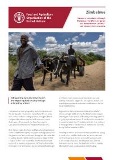
Zimbabwe: Sweden’s contribution through the Special Fund for Emergency and Rehabilitation Activities (SFERA) – Anticipatory Action window
01/2023
Zimbabwe has been plagued by multiple hazards over the last decade, suffering from a series of climatic shocks including cyclones, droughts, floods and pest infestations coupled with severe economic challenges.
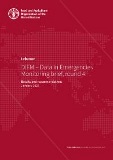
Lebanon: DIEM – Data in Emergencies Monitoring brief, round 4
01/2023
This Data in Emergencies Monitoring (DIEM-Monitoring) brief shares the results of a fourth-round assessment conducted between October and November 2022 in Lebanon.
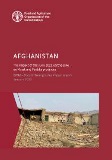
Afghanistan: The impact of the June 2022 earthquake on Khost and Paktika provinces
01/2023
On 22 June 2022, a 5.9 earthquake struck Afghanistan's central region. The provinces of Khost and Paktika were the most affected.

Accountability to affected people: Experiences and good practices from FAO Country Offices
01/2023
Accountability to affected people (AAP) is an active commitment to put vulnerable and affected people at the centre of humanitarian action.

Cameroon: Belgium’s contribution through the Special Fund for Emergency and Rehabilitation Activities (SFERA)
01/2023
As a result of heavy rains (July–September 2022) and river floods (October–December 2022) in Cameroon, fields were destroyed, animals were lost and agricultural livelihoods were disrupted.
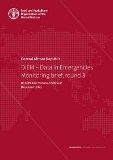
Central African Republic: DIEM – Data in Emergencies Monitoring brief, round 3
01/2023
This Data in Emergencies Monitoring (DIEM-Monitoring) brief shares the results of a third-round assessment conducted between September and October 2022 in the Central African Republic.
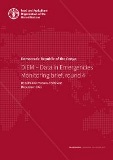
Democratic Republic of the Congo: DIEM – Data in Emergencies Monitoring brief, round 4
01/2023
This Data in Emergencies Monitoring (DIEM-Monitoring) brief shares the results of a fourth-round assessment conducted between September and October 2022 in the Democratic Republic of the Congo.

Ukraine: Emergency projects supported by Germany through the Federal Ministry of Food and Agriculture
01/2023
The outbreak of the war in Ukraine on 24 February 2022 is significantly impacting rural livelihoods and food value chains at the national and global levels.

Subregional Central America – Hurricane Julia and torrential rains: Urgent call for assistance
01/2023
For the first time in history, northern Central America suffered a third consecutive year of La Niña events.
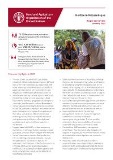
Northern Mozambique: Response overview
01/2023
The ongoing conflict in Cabo Delgado continues to be the main driver of food insecurity in northern Mozambique. In just a little over a year, there has been a ninefold increase in the number of internally displaced people (IDPs) - from 110 000 in March 2021 to nearly 947 000 in June 2022 (International Organization for Migration’s Displacement Tracking Matrix).

Niger: DIEM – Data in Emergencies Monitoring brief, round 4
01/2023
This Data in Emergencies Monitoring (DIEM-Monitoring) brief shares the results of a fourth-round assessment conducted between July and August 2022 in the Niger.
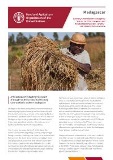
Madagascar: Germany’s contribution through the Special Fund for Emergency and Rehabilitation Activities (SFERA) – Anticipatory Action window
01/2023
Madagascar has been reeling from a socioeconomic crisis marked by high levels of poverty and food insecurity, with the situation worsening as a result of the ongoing effects of the COVID-19 pandemic and of the war in Ukraine.
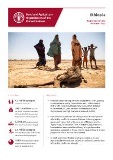
Ethiopia: Response Overview (December 2022)
01/2023
FAO made great strides in ensuring agro/pastoralists in Ethiopia were well prepared to combat the double threat of conflict and drought in 2022.

Rwanda: Belgium’s contribution through the Special Fund for Emergency and Rehabilitation Activities (SFERA) – Anticipatory Action window
12/2022
Rwanda is greatly susceptible to impacts of climate change through its high dependence on rainfed agriculture.

Nigeria: DIEM – Data in Emergencies Monitoring brief, round 3
12/2022
This Data in Emergencies Monitoring (DIEM-Monitoring) brief shares the results of a third-round field assessment conducted between September and October 2022 in Nigeria.
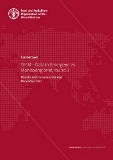
Cameroon: DIEM – Data in Emergencies Monitoring brief, round 3
12/2022
This Data in Emergencies Monitoring (DIEM-Monitoring) brief shares the results of a third-round field assessment conducted between September and October 2022 in the Cameroon.
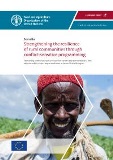
Somalia – Strengthening the resilience of rural communities through conflict-sensitive programming: Translating context analysis and conflict-sensitive recommendations into adjustment in project implementation in Lower Shabelle region
12/2022
This learning brief documents learning around promising programme approaches that can support decision-making and resource allocation processes towards durable solutions to food crises.

Monitoring food security in food crisis countries with conflict situations
12/2022
This report provides an update on the acute food insecurity in countries and territories that have the world’s highest burden of people in need of emergency food, nutrition and livelihood assistance as a result of protracted conflict combined with other factors.
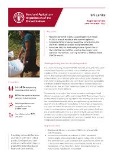
Sri Lanka: Response overview (June–December 2022)
12/2022
Sri Lanka is witnessing an unprecedented economic crisis, and the situation is exacerbated by political and social turmoil.
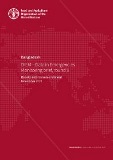
Bangladesh: DIEM – Data in Emergencies Monitoring brief, round 6
12/2022
This Data in Emergencies Monitoring (DIEM-Monitoring) brief shares the results of a sixth-round assessment conducted between September and October 2022 in Bangladesh.
